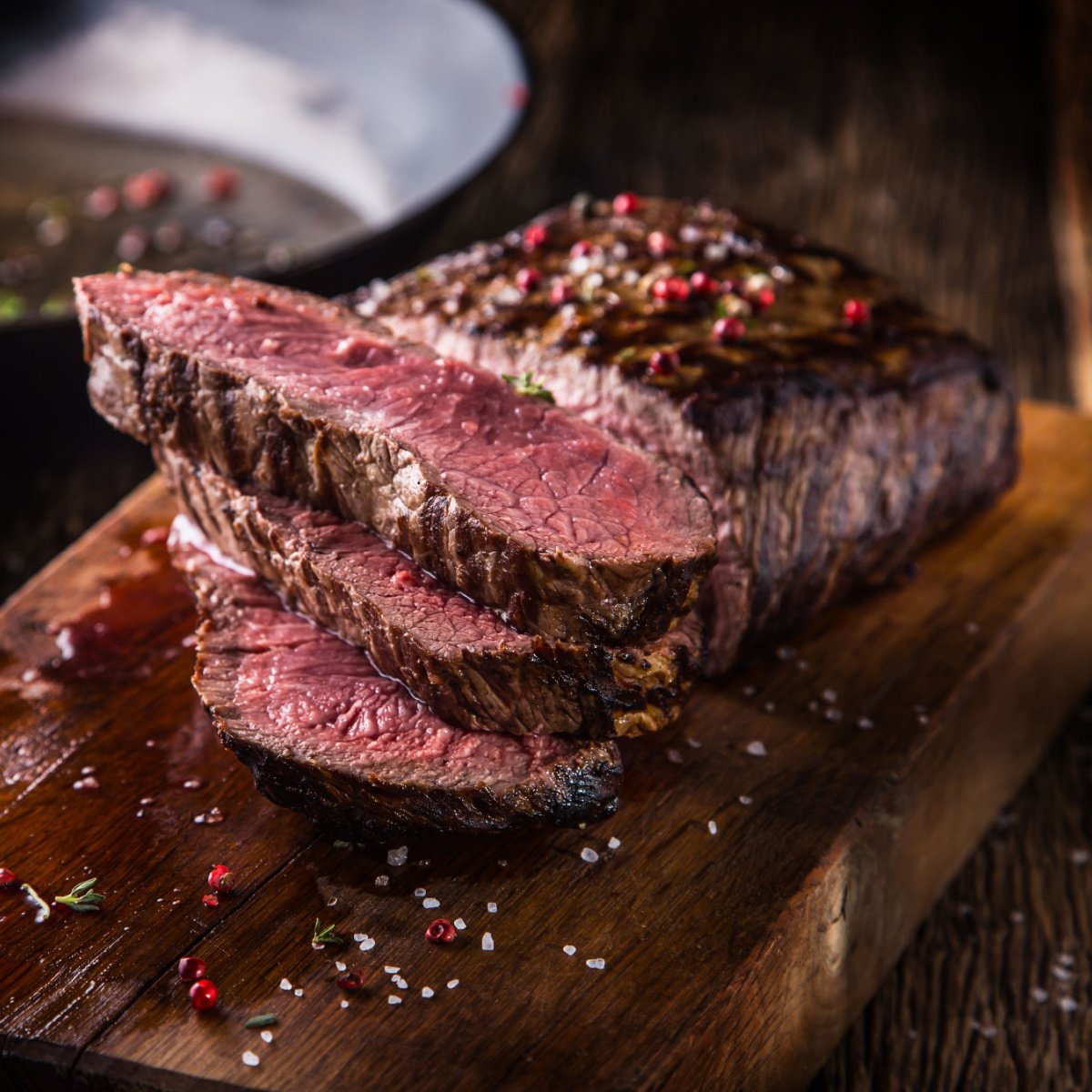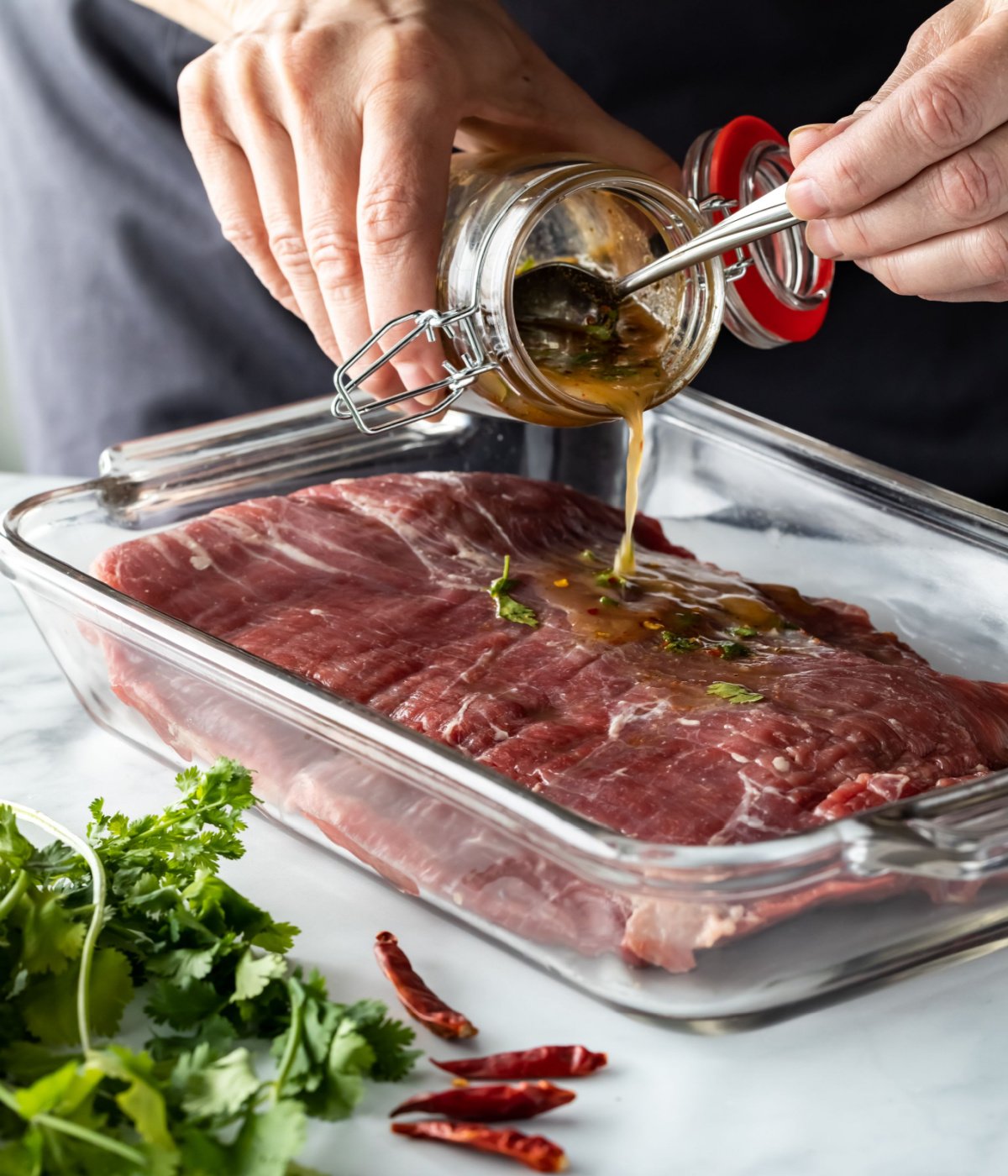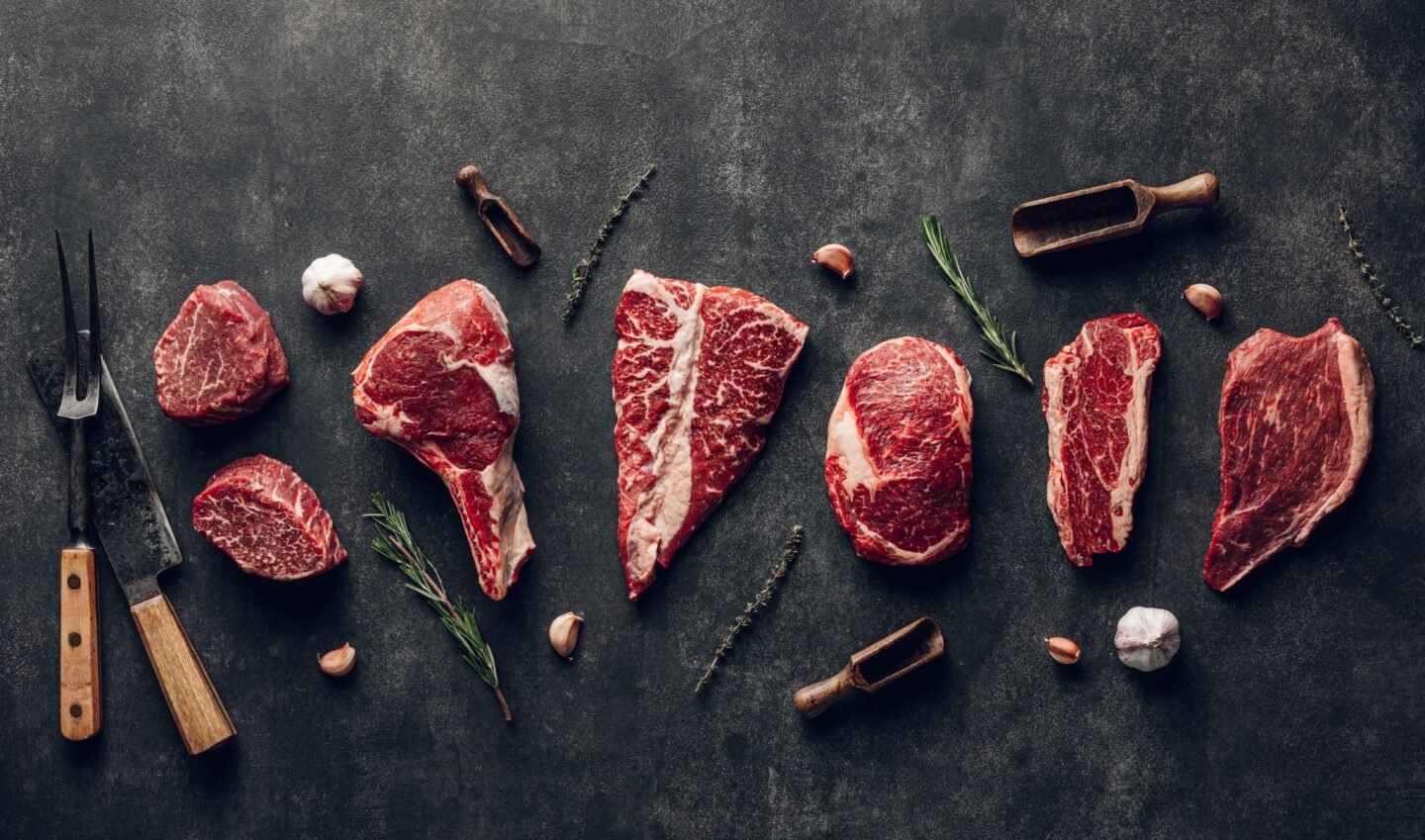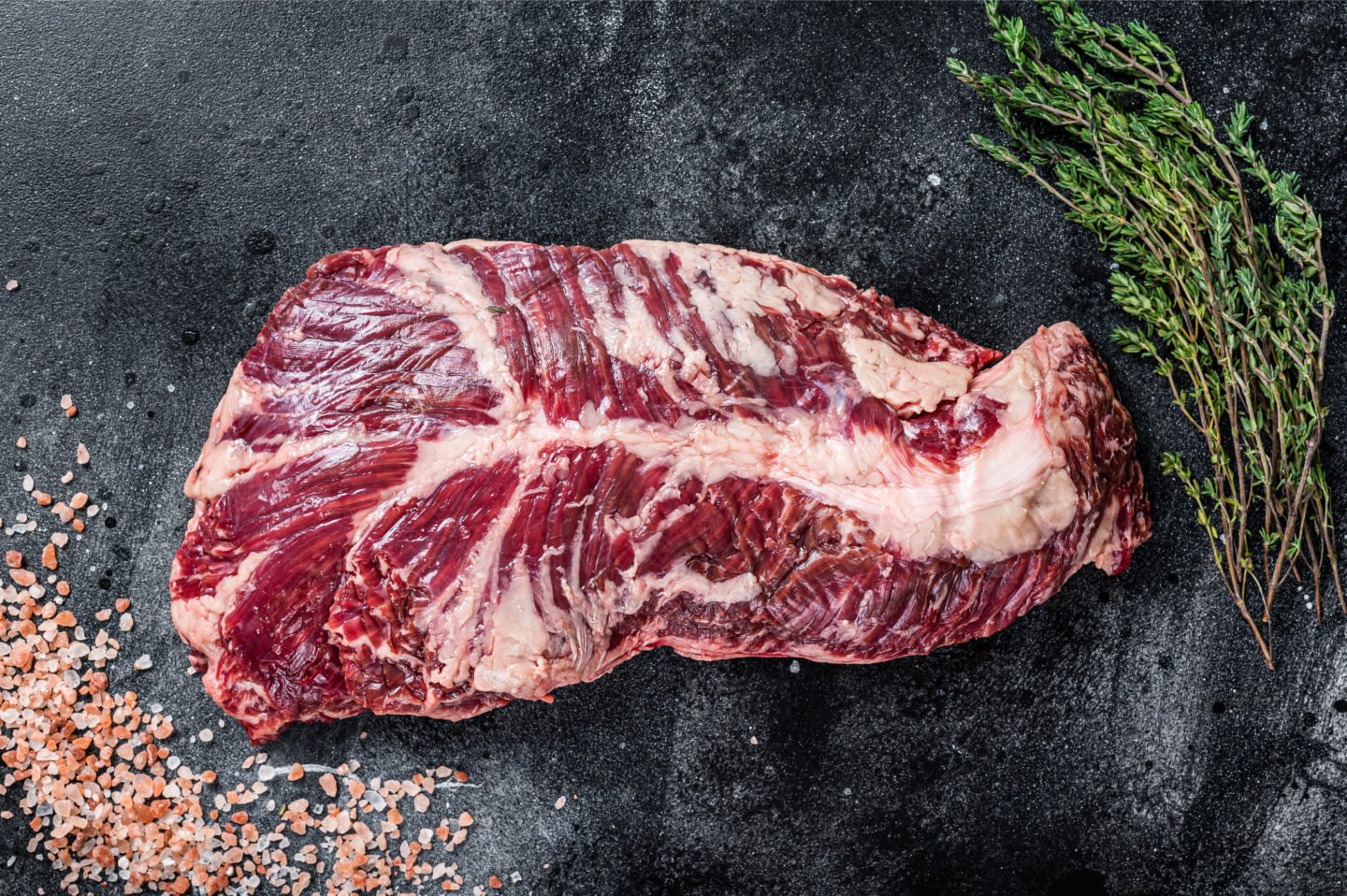The last thing you want when taking the time to cook a nice cut of steak is tough and chewy meat. However, it's not always obvious whether your steak is tough because of the meat, the way it was cooked, or another factor altogether. When's the last time you sat at the dinner table wondering, "Why is my steak tough?"

There are a variety of reasons why steak could be tough. The most common ones are because of the cooking method, the quality, and the cut of the meat, or that it's too old. If you're not sure which of the above reasons you're facing, take a look at our complete guide.
Table of Contents
Cooking Method
Cooking a steak might seem simple, but there's actually a lot involved in preparing one perfectly. If you're not sure where you're going wrong, make sure to pay close attention to all of the following steps.
Seasoning
The way you season your steak can have a big impact on how it tastes as well as how tender it is. Simple salt and pepper can do the trick, but if you're worried about your cut being too tough, try seasoning it a day ahead of time and letting it rest in the fridge overnight. The resting time will allow the meat to reabsorb some of the moisture the salt draws out, making it more tender.
You can also marinate your meat, using citrus or another acidic ingredient to break down the fibers before cooking.
Tenderizing

Maybe the best way to ensure your steak doesn't go tough is to tenderize it beforehand. As mentioned above, a marinade can do the trick, though it will change the flavor of the meat.
Another option is to use a mallet or meat hammer to tenderize it manually. It works the same way as a marinade, breaking up the fibers in the meat to make it easier to chew. Just keep in mind that it will affect the taste, flavor, and texture of the meat.
Cooking
When cooking your steak, it's essential that you control the heat of your pan as well as the internal temperature of the meat.
Most expert steak chefs recommend working on a cast-iron pan over a high or medium-high flame. This will ensure the pan starts hot and stays hot throughout the cooking process, adding more flavor and ensuring the meat isn't chewy. Cooking too long over a lower heat will cause it to become tough.
Undercooking your steak will give the meat an unpleasantly chewy texture as well, or even risk food poisoning. The best way to guard against this is to use a meat thermometer. Simply insert it into the center of your steak and cook until it has reached an internal temperature of 135 degrees Fahrenheit.
Resting
It's an easy step to forget, but one that is just as important as the cooking itself! Resting ensures that the meat's juices don't leak out onto the cutting board once it's sliced, ensuring it stays as tender and delicious as possible. Five to ten minutes after removing the meat from the pan should be plenty, giving you time to plate your sides and set the table.
Slicing
Some cuts of meat are more tough and fibrous than others. If you have a tougher cut, try slicing it against the grain before serving. This will make it much easier to chew.
The Type and Quality of the Meat

If you're confident that your cooking method is spot-on, the problem might be the meat itself. See how different cuts and grades of meat can impact your dinner.
Finding the Right Cut
If you're just pulling any old steak off the grocery store shelf, you might be surprised to learn that there's a big difference between different cuts of meat. Each one comes from a different part of the cow, with different proportions of muscle, fat, and bone. The amount of connective tissue holding the meat together will influence how tough it is when it reaches the table.
Generally speaking, muscles that get more use are the ones that will be the toughest. Skirt steak, flank steak, chuck, and brisket are some of the chewiest. They also tend to be less expensive for this reason.
If you're looking for a more tender cut of beef, stick with filet mignon or tenderloin. Other tender cuts include porterhouse, tri-tip, New York Strip, and T-bone.
Leanness
Connective tissue probably has the biggest impact on the tenderness of a cut of beef, but the nest most important one is fat content. Generally, cuts with a higher fat content will be juicier, more flavorful, and more tender. What you really want to keep an eye out for is marbling, which is fat that ripples throughout the surface of the meat, which will help keep it tender.
Lean steak can be tender, too, though it takes more finesse to cook. If you're not confident in your abilities, you're better off sticking with meat that has plenty of white streaks throughout.
Quality

Sometimes, even the right cut of steak with plenty of marbled fat can still turn out tender through no fault of the chef. If this is the case, it probably has to do with the quality of the meat. How the cows were raised, what they ate, the age of the animal, and other factors can all contribute.
So what's the average consumer to do? The first thing is to pay attention to the grade of beef. In the United States, there are three grades: prime, choice, and select. Prime is the highest quality, sourced from young cattle raised on a good diet. It tends to be the most expensive.
If you don't want to invest in a cut of prime beef, choice can be a good option too. Just make sure to stay away from select beef when cooking steak, as it's better suited for dishes where it's not playing the starring role.
Fresh Vs Aged
While freshness is important, steak doesn't necessarily need to have been recently slaughtered for it to be delicious. Some of the best steaks are aged, which can add a deeper flavor to the meat and also make it more tender. If you don't mind spending a bit extra, an aged steak can be a good way to ensure more tenderness.
If your steak isn't aged, you want to find one that has been as recently slaughtered as possible. To get the freshest possible meat, you can check the best-by dates at your local grocery store, though in all likelihood, a butcher shop is a better option.
Generally, it's better to avoid steaks that have been previously frozen. While freezing and thawing will not necessarily make the steak tougher, it will result in a lower overall quality. If you do buy frozen steaks, remember to thaw them slowly by leaving them in the fridge overnight.
Related Questions
Shank steak is the toughest cut of beef, and for this reason it isn't commonly found in supermarkets. When it is used, it usually features in a stew, where the long cooking process can break down its connective tissue.
One of the most common reasons for chewy steak is undercooking. So if your steak is tough, try throwing it back on the griddle for another minute or two.

Leave a Reply